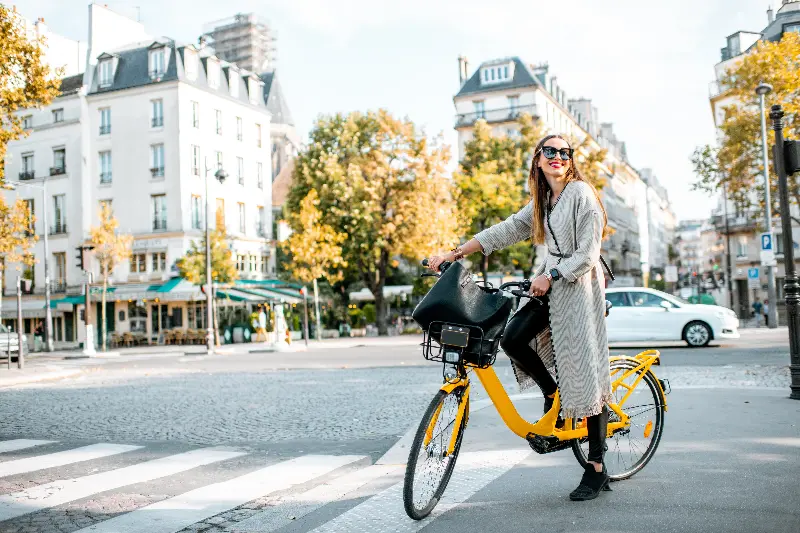For more than two centuries, a simple yet transformative invention has rolled quietly through the corridors of history: the bicycle. Both marvelously modest and profoundly impactful, the bicycle has steered societies toward healthier, cleaner, and more sustainable futures. It's a story that combines ingenuity, resourcefulness, and a dash of rebellion, all set on two wheels. As cities worldwide now re-discover its potential, let's journey through the social history and technological evolution of this eco-friendly invention, tracing how it became a powerful symbol of green progress.

The Humble Origins: Pedaling Into Public Life
The first bicycle-like device emerged in 1817 when German baron Karl von Drais introduced the “laufmaschine,” a wooden frame propelled by the rider’s feet pushing on the ground. It wasn’t just a fad; the vehicle arose during a horse shortage caused by a volcanic eruption, illustrating early on the bicycle’s ability to offer transport solutions in crisis. As engineers added pedals, iron frames, and rubber tires through the 1800s, the bicycle evolved rapidly.
By the late 19th century, the “safety bicycle”—with equal-sized wheels and a chain drive—became the blueprint for today’s ride. This era’s innovation democratized mobility: previously, horses or expensive carriages were required to travel distances quickly, but the bicycle opened a world of opportunity for the wider public. Notably, it became both a tool and a symbol for women’s emancipation, offering unprecedented personal freedom and challenging strict gender norms.
Wheels of Social Change: Beyond Transportation
The bicycle was never just about getting from point A to point B. In the late 1800s and early 1900s, it fueled social movements and inspired urban reform. Cities adjusted infrastructure—laying smoother roads and building new paths—to accommodate the ever-growing two-wheeled population. In fact, several modern highway and urban planning ideas were first pioneered for cyclists.
In Britain and the United States, bicycles played a bold role in women’s rights. Elizabeth Cady Stanton famously proclaimed the bicycle “has done more to emancipate women than anything else in the world.” Bicycles became both transport and a statement: they signaled independence and facilitated participation in public life, work, and recreation. Moreover, cycling clubs and competitions helped break down class barriers and fostered a culture of inclusivity.

The Green Alternative: Quiet Progress Through the 20th Century
As cars, trains, and trams rose to dominance, the bicycle’s popularity dimmed in many affluent countries—but it never truly disappeared. In places like the Netherlands, Denmark, and China, cycling remained central to daily life. During crises such as World War II, bicycles became essential again, especially when fuel shortages restricted other forms of transport.
The 1970s oil crisis marked a renewed interest in the humble bike. Concerns about air pollution, resource scarcity, and the dangers of car-centric urban planning led visionaries to look again at two wheels. Urban planners and environmentalists realized the bicycle’s power: a non-polluting, quiet, affordable, and space-efficient solution to modern mobility challenges.
Modern Innovations: Bicycles in the Age of Sustainability
With the 21st century’s focus on climate action, the bicycle is enjoying a renaissance, bolstered by groundbreaking technology and city design. Today’s bikes are lighter, faster, and more ergonomic thanks to advances in materials such as carbon fiber and refined manufacturing techniques. E-bikes—pedal-assisted cycles with electric motors—hugely expand accessibility, making cycling feasible for longer distances and older riders or those with mobility issues.
Many cities are nurturing this revival. Paris, for instance, invested in over 1,000 kilometers of bike lanes and a wildly popular public bike-share scheme, Vélib’. Cycling rates have surged, smog levels have dropped, and the local economy has benefitted from healthier, happier citizens. Cities from Bogotá to Copenhagen are following suit, devising networks of protected lanes, integrating bikes with public transit, and creating car-free zones.
The numbers support the bicycle’s environmental credentials: cycling produces practically zero emissions, reduces traffic congestion, and requires far less energy and materials to manufacture compared to motor vehicles. The environmental impact of swapping one short car trip for a bike ride is significant—even half of all urban car journeys could be replaced by bikes or e-bikes.
Riding Toward a Greener, More Inclusive Future
Perhaps most remarkably, the bicycle continues to unite people across ages and backgrounds. It remains a tool of personal independence for students, a cheap commuting option for workers, and a means of exploration and play for families. Cycling also greatly enhances physical and mental health—a twenty-minute ride can reduce stress, improve heart health, and boost overall well-being.
As communities rethink their relationship with urban space, transportation, and ecology, the bicycle proves that some of the most effective solutions are astonishingly simple. The next revolution might not roar, but quietly whir—a testament to human ingenuity and the enduring magic of power harnessed through pedals.
The bicycle’s journey is far from finished. As more cities invest in cycling infrastructure and new generations rediscover the joy of two wheels, it is clear that the bicycle’s role as a green, inclusive, and transformative force will only expand. In the story of sustainable transportation, the bicycle isn’t just a chapter—it’s one of the most compelling plots.
